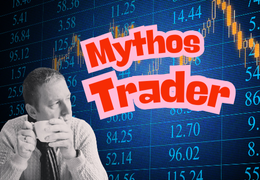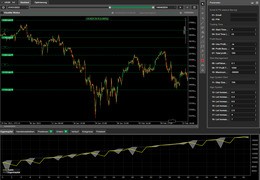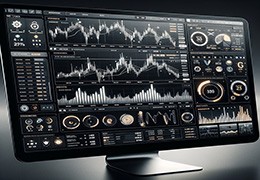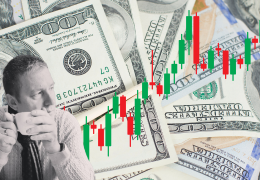Between reality and illusion If you want to know what trading really means—beyond luxury cars, piles of cash, and...
Search in blog
Blog categories
- FAQ – Your guide through the world of finance and technical facilities (2) click
- Daytrading Almanac (27) click
- Press release (23)
- Educational (26) click
- Projects (9)
- Chart analysis (39) click
- Trading bots for cTrader (11)
- AI in trading (5)
- Trading Strategien (11)
- Trading signals and stock market letters (46)
Latest posts

When it comes to traders, social media platforms often create a rather one-sided image: a young face smiling at the...

The TegasFX Instant Funding program sets a new standard for traders seeking quick access to capital without having to...

Backtesting trading strategies is an essential tool for traders who want to validate their methods across historical...

introduction In the world of trading, it can be challenging to balance the intense market activity and the rapid...
Popular posts





Featured posts





Photo gallery
No featured images
Archived posts
Top authors
-
 Christian Lill 70 Posts View posts
Christian Lill 70 Posts View posts -

-

-

-

The most important financial indicators every trader should know
What are financial indicators?
Financial indicators are statistical data points that provide information about the economic performance or prospects of a company or economy. These data points can include both quantitative and qualitative information and are often presented in the form of reports, indices or ratios. Traders use these indicators to identify trends and patterns that could indicate future market movements.
Important financial indicators for traders
-
Gross domestic product (GDP)
GDP measures the total value of all goods and services produced in a country over a given period of time. It is a key indicator of a nation's economic growth and health.
-
What it means for traders : A rising GDP signals a healthy economic environment, which is positive for the stock market. A falling GDP can indicate an economic slowdown, which could be negative for stocks.
-
Unemployment rate
The unemployment rate measures the proportion of the working-age population that is currently unemployed and actively looking for work. It is an important indicator of the economic stability and purchasing power of an economy.
-
What it means for traders : A low unemployment rate indicates a strong economy, which is positive for the stock market and consumer demand. A high unemployment rate can indicate the opposite.
-
inflation rate
The inflation rate measures the rate at which prices of goods and services in an economy are rising. The Consumer Price Index (CPI) and the Producer Price Index (PPI) are commonly used inflation measures.
-
Importance for traders : Moderate inflation is often seen as a sign of a growing economy. However, high inflation can erode purchasing power and lead to higher interest rates, which can be negative for the stock market.
-
Central banks’ interest rate decisions
Central banks, such as the Federal Reserve in the USA or the European Central Bank (ECB), play a crucial role in steering monetary policy through interest rate decisions.
-
What it means for traders : Low interest rates can stimulate economic growth and have a positive impact on the stock market. High interest rates can increase borrowing costs and slow economic growth, which tends to be negative for stock valuations.
-
Purchasing Managers Index (PMI)
The PMI is an indicator of the economic health of the manufacturing and services sectors. A reading above 50 signals expansion, while a reading below 50 indicates contraction.
-
What it means for traders : A rising PMI indicates expansion and economic strength, which is positive for stock markets. A falling PMI may indicate a slowdown in economic activities.
-
Earnings reports and company figures
Corporate metrics such as price-earnings ratio (P/E), return on equity (ROE) and earnings growth are crucial indicators of a company's financial health.
-
Importance for traders : Positive earnings reports and strong company figures can lead to an increase in the share price. Weak results or disappointing prospects can lead to price losses.
-
trade balance
The trade balance measures the difference between a country's exports and imports. A trade surplus indicates a strong export economy, while a trade deficit indicates a higher dependence on imports.
-
Importance for traders : A positive trade balance can strengthen a country's currency and promote economic growth. A negative trade balance can have the opposite effect and lead to currency fluctuations.
Integration of financial indicators into trading strategies
-
Top-down analysis
In top-down analysis, the trader starts with a macroeconomic assessment and then works his way down to specific sectors and companies. Financial indicators such as GDP, unemployment rate and inflation provide an overview of the economic climate before investing in specific stocks.
-
Fundamental analysis
Traders use fundamental analysis to evaluate the intrinsic value of a company. Company metrics and earnings reports are key components of this analysis. This data allows traders to assess whether a stock is undervalued or overvalued.
-
Technical Analysis
Although technical analysis is primarily based on historical price movements, financial indicators can provide additional context. For example, a trader can combine technical indicators with the results of PMI reports to better understand potential price movements.
The importance of context
Financial indicators should never be considered in isolation. The context in which they occur is crucial. A rising GDP can be positive, but if this is accompanied by a high inflation rate, central banks may be forced to raise interest rates, which could negatively affect the market. A comprehensive analysis therefore requires combining several indicators and taking into account the current economic and geopolitical situation.
Conclusion
Understanding and applying financial indicators is essential to successful trading strategies. By knowing the most important indicators and incorporating them into trading decisions, traders can make more informed and educated decisions. This increases the chances of successful trades and long-term profits.
Discussion stimulus
Which financial indicators do you use most often in your trading strategies? Do you have specific techniques to analyze and interpret these indicators? Share your experiences and strategies in the comments and let's learn together!
Leave a comment
Related posts
 Day Trading Almanac Foreword
Day Trading Almanac Foreword
 History of day trading
History of day trading
 Choosing the right trading platform
Choosing the right trading platform
 Case study: Automated trading (bot trading) and its impact on retail investors’ leisure activities
Case study: Automated trading (bot trading) and its impact on retail investors’ leisure activities
